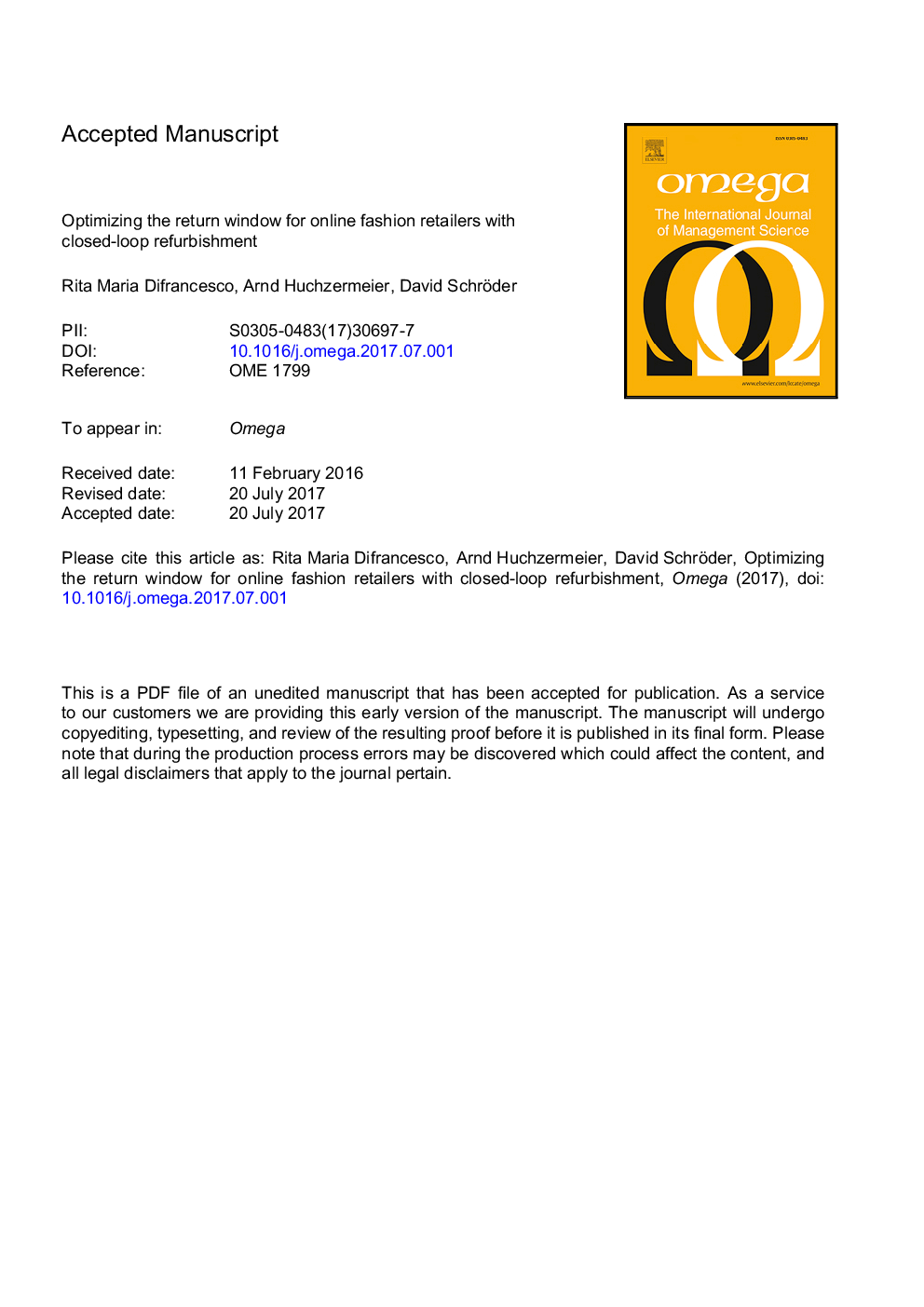| Article ID | Journal | Published Year | Pages | File Type |
|---|---|---|---|---|
| 7436651 | Omega | 2018 | 38 Pages |
Abstract
The strategic positioning of online fashion retailers is defined, in part, by how they handle the complex task of managing returns. Although customers demand lenient policies such as free and late returns, tight control of returned items is mandated by the high costs of re-transportation and product value erosion. We model closed-loop fashion supply chains in order to describe, analyze, and optimize the performance of both forward and backward networks, including a secondary market. The model is based on a queueing system that combines the effect of new products entering the network for the first time with returned products entering the network for the second or nth time. We derive a closed-form expression for optimal service rates at both the test and refurbishment facilities and for the optimal return window. We then analyze the economic effects-on supply chain profit-of return rate, multiple looping of the same item in the supply chain, returned items being sold in a secondary market, and controlled delays in the refurbishment cycle. We apply our model to data obtained from a German fashion online retailer and report the managerial insights derived from this approach. Our results indicate how a company can set its return window strategically so as to maximize her profit as well as how it can decide whether to refurbish merchandise or sell it in the secondary market. In addition, we describe how refurbishment activities can sometimes lead to greater benefits even though the secondary market is usually an attractive opportunity for product returns.
Related Topics
Social Sciences and Humanities
Business, Management and Accounting
Strategy and Management
Authors
Rita Maria Difrancesco, Arnd Huchzermeier, David Schröder,
